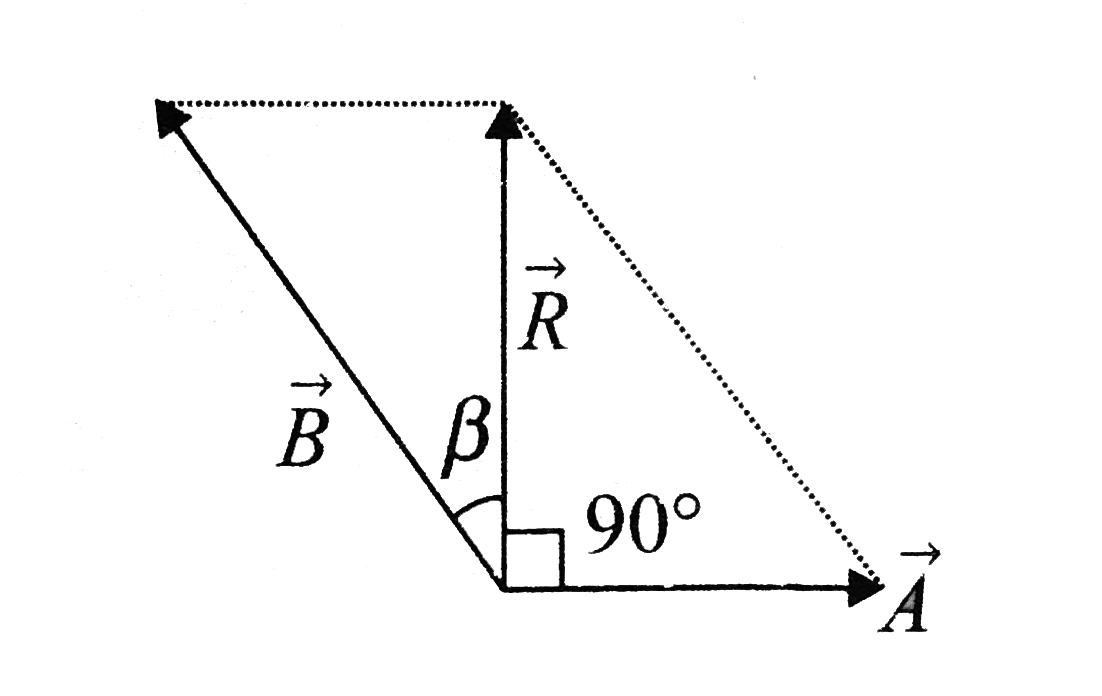If for two vectors →A and →B, sum (→A+→B) is perpendicular to the difference (→A−→B). Find the ratio of their magnitude.
1
2
3
None of these
The correct Answer is:A
(→A+→B) is perpendicular to (→A−→B). Thus
(→A+→B).(→A−→B)=0
or A2+→B.→A−→A.→B−B2=0
Because of communative property of dot product →A.→B=→B.→A
∴A2−B2=0orA=B
Thus the ratio of magnitudes A/B=1
Topper's Solved these Questions
- BOOK - A2ZCHAPTER - VECTORSEXERCISE - Cross Product25videos
VECTORS
- BOOK - A2ZCHAPTER - VECTORSEXERCISE - Problems Based On Mixed Concepts32videos
VECTORS
- BOOK - A2ZCHAPTER - VECTORSEXERCISE - Expressing Vectors In Unit Vector Notation22videos
VECTORS
- BOOK - A2ZCHAPTER - UNIT, DIMENSION AND ERROR ANALYSISEXERCISE - Chapter Test28videos
UNIT, DIMENSION AND ERROR ANALYSIS
- BOOK - A2ZCHAPTER - WAVES AND ACOUSTICSEXERCISE - Chapter Test30videos
WAVES AND ACOUSTICS
Similar Questions
If for two vectors ˆA and ˆB,sum (→A+→B) is perpendicular to the diffrence (→A−→B). Find the ratio of their magnitude.
View SolutionThe sum and difference of two vectors →A and →B are →A+→B=2ˆi+6ˆj+ˆk and →A−→B=4ˆi+2ˆj−11ˆk. Find the magnitude of each vector and their scalar product →A→B.
View Solution
Knowledge Check
- Question 1 - Select One
Two vector →A and →B have equal magnitudes. Then the vector →A+→B is perpendicular :
A→A×→BB→A−→BC3→A−3→BDAll of these - Question 2 - Select One
The resultant of two vectors →A and →B is perpendicular to the vector →A and its magnitudes is equal to half of the magnitudes of vector →B (figure). The angle between →A and →B is
 A120∘B150∘C135∘DNone of these
A120∘B150∘C135∘DNone of these - Question 3 - Select One
The resultant of two vectors →Aand→B is perpendicular to the vector →A and its magnitude is equal to half the magnitude of vector →B. What is the angle between →Aand→B ?
A30∘B45∘C150∘D120∘
If a vector →a is perpendicular to two non collinear vectors →b and →c, then →a is perpendicular to every vector in the plane of →b and →c
View SolutionThe resultant of two vectors →Aand→B perpendicular to the vector →Aanditsmagnitudequal→halfofthemagnitudeofthe→−−→r vec B.F∈doutthe∠between vec A and vec B.
View SolutionIf a vector →a is perpendicular to two non-collinear vector →b and →c , then →a is perpendicular to every vector in the plane of →b and →c .
View SolutionIf →a.→band→c are unit vectors such that →a is perpendicular to the plane of →b,→c and the angle between →band→c is π3. Then what is ∣∣→a+→b+→c∣∣ ?
View SolutionFor any two vectors A and B, if →A.→B=∣∣→A×→B∣∣, the magnitude of →C=→A+→B is equal to :
View Solution

